Beef tallow, once a staple in housedholds, has made a comeback in the clean beauty realm recently. But is this rendered beef fat the moisturizing miracle many claim it to be? I am diving in to discuss the benefits, and drawbacks, of using beef tallow in your skincare routine. And, I will ultimately be answering the question: “Will I be adding beef tallow to my skincare routine?”
*Affiliate Disclosure: I do have affiliate links in this blog post. If you purchase something from my link, I will receive a small commission from the sale. This comes at no cost to you, but is paid by the company. I do not take becoming an affiliate with any company lightly. If I am, it’s because I believe in the company and their product.
What Is Beef Tallow?
Beef tallow is the rendered fat obtained from the fatty tissue of cows. In simpler terms, it’s the result of melting down the fat portions of beef until a clear liquid is formed, which then solidifies upon cooling.
History Of Beef Tallow In Skincare
Beef tallow use can actually be seen across many different cultures for centuries.
- Ancient Egypt– Beef tallow was used as a means to protect skin against the dry, harsh conditions of the desert.
- Medieval Europe– Beef tallow was a household staple. It was used for cooking, candle-making, and soap production. When it was discovered the residue of the beef tallow used for making soap left a person’s skin soft and less prone to cracking, it began to be used for skincare.
- Native Americans– They recognized the benefit of beef tallow in skincare and would mix herbs and other healing ingredients to create protective salves. This was especially important for those living in colder climates to protect against skin chapping.
Once the industrial revolution arrived, skin care products were mass-produced. This included petro-chemicals replacing the historically used natural ingredients (such as beef tallow). This was driven by both cost preferences and the want for unscented and lighter products.
But, with the growing clean beauty movement, the use of beef tallow in skincare has been revived. But, is it all that it claims to be? Read on for all the details!

Benefits of Beef Tallow In Skincare
The composition of beef tallow is what makes it particularly intriguing for skin applications. It contains the following (source):
- Vitamins A, D, K, E and B12
- Choline
- conjugated linoleic acid (CLA)
- Other fatty acids, including oleic acid, palmitoleic acid, stearic acid, linoleic acid and others
It has been said that the components of beef tallow closely resemble the fats or lipids found in our skin’s outermost layer, known as the stratum corneum. This similarity has led many to believe that beef tallow can be easily absorbed and utilized by our skin, offering moisturizing and nourishing properties.
With the right product sourcing, beef tallow is definitely considered non toxic and even natural. No synthetic ingredients here!
Use of beef tallow has really gained traction in recent years for its potential benefits for skin health. However, as with all skincare ingredients, it’s essential to dive deep and understand its full spectrum of advantages and even potential concerns.
So far beef tallow sounds pretty great. But, to be thorough I definitely need to consider any cons to using beef tallow. And I have pulled all the stops by getting some expert advice.
Related Content: Toups and Co Review
Skincare Expert Esthetician
I reached out to my friend and skincare expert esthetician Marissa Gossett to help break down the use of beef tallow in skincare. And did she deliver! First, here is a little info on Marissa and her expertise:
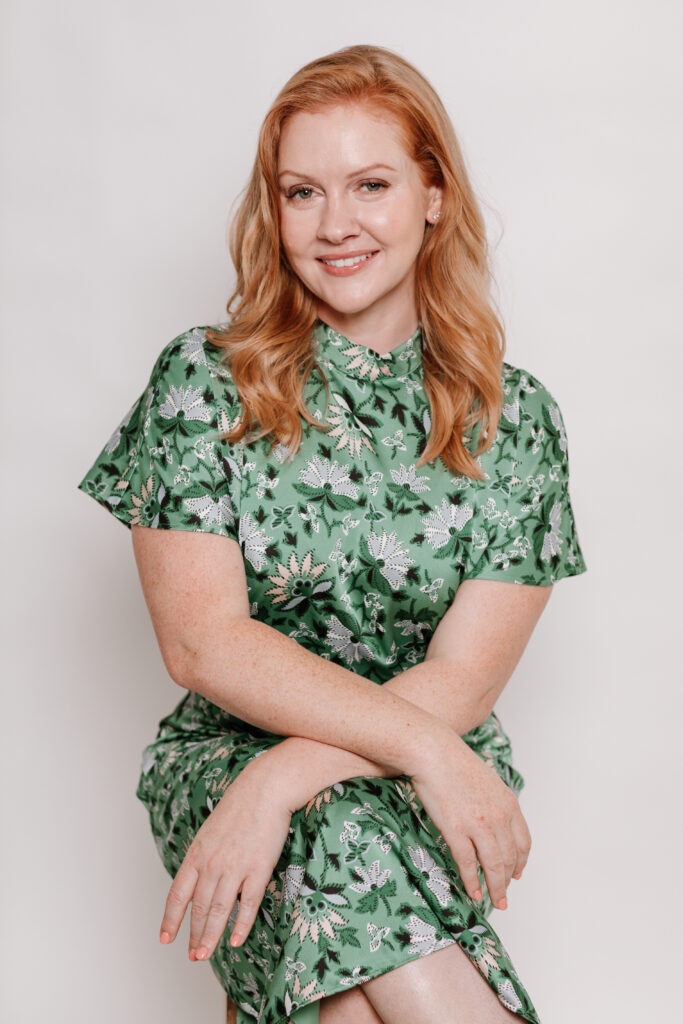
Growing up, Marissa had her fair share of skin struggles. After her second round of Accutane and feeling ill-equipped to care for her own skin, Marissa became an esthetician in 2006. Marissa soon discovered that most women with acne-prone and sensitive skin were just like her; they knew nothing about skincare!
Unfortunately, esthetics school also left Marissa thirsty for knowledge, as there was a huge education gap that no one was providing! In her research, Marissa discovered corneotherapy, a skincare approach that keeps the skin barrier strong and supported with ingredients and formulations that are skin-native.
After finding a couple of skincare lines that supported this approach, Marissa began to see clients virtually. Since then, Marissa evolved Gritty Beauty, improving her unique 360-degree approach to long-lasting results, which not only targets acne but hyperpigmentation and aging too.
After working with women one-on-one since 2018, Marissa launched Stunning Skin, a program that guides women to clear and healthy skin. In addition, she has a free Skin Group where you can ask questions and learn more about her approach, as well as Gritty Beauty Approved, a monthly membership for acne-friendly beauty products.
Use code GURLGONEGREEN to save 10%!
Marissa’s resources:
Stunning Skin Program
Skin Group
Gritty Beauty Approved Membership
Cons Of Using Beef Tallow In Skincare
It seems like yesterday, skin professionals were discouraging people from using coconut oil as their panacea beauty product! I get it, using ingredients straight from nature, of flora or fauna, seems harmless and even ideal, however, the problem is that not all of them are beneficial or even speak the language of the human skin. Maybe you’re one of the many who created breakouts and dermatitis with this stuff.
A decade later, all eyes are on Tallow, which is beef fat. If you’re like me, you desire to improve the look, feel, and function of your skin, and that is why I reach for innovative cosmetic formulations that relate to, identify, and optimize my skin. In this article, I’ll help you decide if tallow is good enough for your skin!
If you think using tallow as a cosmetic doesn’t seem right, your intuition is probably correct! Maybe you question using a skincare product created by someone other than a cosmetic chemist. Maybe the texture and smell are off-putting? Or maybe you question why humans are only now realizing the too-good-to-be-true healing benefits since tallow has been around since… well, before humans!
Of course, these same questions led me to research Tallow and find out who is using it, what is the state of their skin when they began using it, what mechanism is creating the positive/negative results, and what the outcomes are. I often become obsessed with trending skincare products and treatments especially when they yield a high amount of polarizing testimonials.
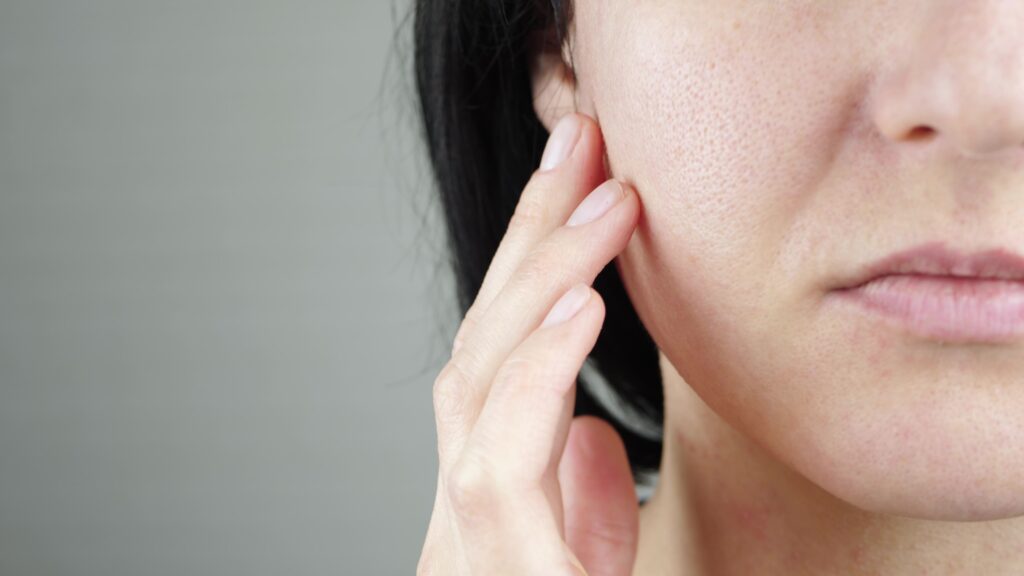
Tallow Users Don’t Understand Skin Function
People drawn to using tallow as a cosmetic usually follow a pro-metabolic or nourishing traditions lifestyle. They avoid plant oils at all costs, believing they are harmful to human skin and body. More on that later.
Tallow users tend to have a more minimalist beauty approach – “Less is more. The closer to nature, the better.”
Like most humans, they are constantly searching for that magic potion to solve all their skin woes instead of seeking to understand skin complexities and nuances. I have read dozens and dozens of stories about Tallow users having very barrier-impaired skin suffering from inflamed acne, dermatitis, eczema, and stripped/painful skin. They tell the tale that they have tried everything, even prescriptions from their doctor, and nothing worked until they used miraculous tallow! But in their case, could Vaseline (or an alternative) have worked the same?
Is Tallow Just An Archaic Slugging Agent?
If you love tallow and have noticed your skin is softer, smoother, and less inflamed, you are experiencing the benefits of slugging, not necessarily from Tallow.
Slugging is the act of applying an occlusive agent like Vaseline, or in this case, an animal fat, as an SOS attempt to heal barrier-impaired skin.
Slugging serves as a temporary lipid barrier, locking in water, a crucial nutrient of youthful skin. This process, over a short period, can even help regenerate the skin’s natural moisturizing factors, help rebuild your barrier, and lower inflammation overall. But only to a certain point.
Tallow has taken their skin from a dysfunctional to a functional or barely functional state. Those with acne-prone skin may have also experienced a temporary period of clearing as well.
I have yet to see Tallow take skin from functional to optimal. What do I mean? Tallow users tend to have skin that is still visually congested and inflamed and are blind (or willfully ignorant) to the fact that their skin could be much healthier. If they are happy with their skin on tallow, then who am I to judge? But it’s important to realize that we are comparing apples to oranges, functional to optimal. (source)
Is Tallow Good Enough For Your Skin?
My job as a virtual esthetician is to teach women how to maintain a healthy skin barrier at all times, and a huge part of this is omitting inflammatory skincare products and practices. We do this not just to improve skin’s look, feel, and function but to encourage whole body health as well.
A study from 2019 suggests that inflammatory skin conditions are linked to Alzheimer’s, Heart Disease, and Diabetes due to chronically elevated cytokine levels. This is why we must learn which products and approaches are best for skin instead of enforcing what we think is best, which is often myopic or biased!
Now, I’m going scrutinize Tallow like I would any other cosmetic ingredient or formula, through a physiological lens, how it interacts with the skin at a surface level, for better or for worse. Tallow does have occlusive (as described above) and emollient benefits – like all lipids, they feel very nice on the skin, but I’ll show you that they quickly end there. You see, without meeting the physiologic demands of skin, your skin will soon reveal areas of disconnect.

The Problem With Using Fats, Oils, Butters, and Balms (FOBBs) In Place Of A Moisturizer
In my practice, I see a lot of dehydrated skin at a surface level despite these clients drinking enough water and electrolytes and being at a healthy weight. How do I know? If you have a case of fine lines across your forehead that is a sign you are locking in dry and dehydrated skin.
Women with dehydrated skin mistakenly think their skin is dry. They are often drawn to using FOBBs, like Tallow, in place of a moisturizer under the impression they are hydrating their skin! FOBBs actually have nothing to do with water other than preventing transepidermal water loss (aka TEWL).
Waterless routines or skipping humectant-based skincare is detrimental because water-rich skin is resilient against inflammation and collagen breakdown. Skin dehydration is so rampant that the vast majority of my clients’ skin does a one-eighty when their skin is rehydrated. If you use FOBBs only, like Tallow, without using water-based formulations, as your anti-acne or anti-aging strategy, it will likely result in more acne, dermatitis, or accelerated aging.
Tallow Is Not Recognized As A Cosmetic Ingredient
Tallow, or any other animal fats, are not recognized as a cosmetic ingredient. This may be a petty point to make, but there are hundreds of elegant cosmetic materials that are much more skin-beneficial and are not considered toxic chemicals. (FYI, Tallow is a chemical.)
I asked two of my seasoned cosmetic chemist colleagues why they don’t use Tallow, and simply put, the negatives outweigh the positives. There is a place for handmade cosmetics, but I find it disrespectful to cosmetic chemistry when moms are mixing up concoctions in their kitchen and marketing them as superior to the formulations birthed by decades of expertise at a chemistry bench.
Animal Fats And Plant Oils And Butters Should NOT Contain High Concentrations Of Free Fatty Acids
Tallow is made up of triglycerides, with a fatty acid composition that is roughly 26% Palmitic acid, 14% Stearic acid, 3% Myristic acid, 47% Oleic acid, 3% Palmitoleic acid, 3% Linoleic acid, 1% Linolenic acid.
Several brands tout the benefits of its saturated acids such as Oleic, Stearic, and Palmitic acids; however, they are bound within Tallow’s triglycerides, rendering (pun intended) the fatty acids useless.
Unless Tallow has become rancid, the free fatty acid content should be extremely low and a high free fatty acid content indicates a rancid lipid. Fatty acids cannot be utilized in the skin unless they are free, and no one wants to use rancid FOBBs, pro-oxidants causing free radical damage, on the skin.
On another note, this is also why it’s extremely important to add antioxidants to all cosmetic formulations, even those that are waterless. Yes, saturated fats like Tallow, do become rancid over time. In order to gain skin benefits from any of these fatty acids, they need to be isolated, and cosmetic manufacturers do make these fatty acids available. (source)

Acne Bacteria Degrades FOBBs
Fatty acid composition matters for most people with acne-prone skin for these two possible reasons:
1. Skin that is acne-prone produces excess sebum which overwhelms the skin’s vitamin E supply, increasing the load of oxidative stress which can destabilize topically applied triglycerides, such as Tallow.
2. Acne bacteria, and other opportunistic microorganisms like Malassezia fungus, Staph and Corynebacterium, feed on the glycerol molecules that keep the fatty acids bound in the triglyceride.
Fatty acids like Palmitic, Linoleic, and Linolenic actually have a positive influence on acne-prone skin, but the real doozy is Oleic.
Once acne bacteria frees up Oleic acid, the metabolite inflames inside the follicle creating scabbing and scaling, contributing to barrier impairment, comedone formation, and acne eruptions. This is why we want to ensure the Oleic fatty acid content is no more than 20% in any plant oil (as animal fats are much higher) and is only used within an emulsion (a moisturizer) which is usually no more than a third of the formula.
Other fatty acids to watch out for are Lauric and Stearic, which indicate that the plant oil/butter or animal fat is thicker and/or has a high melting point, both of which can clog pores or trap bacteria setting off the very complex acne cascade. (source)
Tallow Is NOT Non-Comedogenic
I explained above how comedones can be formed from Tallow on the face, or anywhere there is a high concentration of oil glands, where bacteria like to hide. It’s important to note that “non-comedogenic” is a cosmetic claim and unless Tallow has undergone comedogenic testing done by a third party, the claim is illegal to make. The non-comedogenic claim is only relevant to acne-prone skin, not skin that is dermatitis-prone or has a few pimples here or there.

Tallow Does Not Resemble Healthy Human Sebum
No plant oil or animal fat resembles healthy human sebum, not even jojoba oil. Sebum, created in the sebaceous glands within the follicle, is a mixture of lipids that make their way to the surface of your skin comprised of triglycerides, wax, esters, squalene (not to be confused with squalane), free fatty acids, and small amounts of cholesterol, and diglycerides.
Studies show that sebum in healthy skin is balanced, while sebum in skin with acne is overabundant, with drastically higher levels of squalene and lesser levels of linoleic acid. (If you just figured out that Tallow actually resembles that of unhealthy sebum, you are correct!)
It is estimated that linoleic acid constitutes around 10-14% of the total fatty acids present in healthy human sebum.
Linoleic acid plays a vital role in maintaining skin barrier function, regulating inflammation, and preventing excessive sebum production. Since we know that plant oils shouldn’t contain more than a minuscule amount of free fatty acids unless acne bacteria is present to free them, I disagree with using oils high in linoleic fatty acid to mimic human sebum. However, I don’t find a problem with using plant oils in skincare products as long as they are shelf and skin-stable. (Source)
Tallow and the Washout Effect
The stratum corneum, aka lipid barrier, contains approximately 50% ceramides, 35% cholesterol and 15% free fatty acids. Its job is to keep water in and irritants out, prevent inflammation, and promote important physiologic processes.
The Washout Effect affects those whose skin feels dry or uncomfortable despite using their Tallow every day. This is because FOBBs are often used to replace a dysfunctional lipid barrier, which is often all that skin can tolerate. The point and purpose of a skincare routine is to support and strengthen your skin’s protective barrier.
As I mentioned before, Tallow can act as an interim lipid barrier, but it shouldn’t be relied upon because it doesn’t address the root cause of your skin dysfunction. It’s important to assess your skin habits to determine how your habits are harming your skin and then aim to create a supportive skincare routine.
Can Tallow Be Used To Support Healthy Skin?
Unless you are using Tallow exclusively on your body, which I don’t find to be much of an issue, I don’t recommend using Tallow on your face if your goal is to have clear and healthy skin!
Healthy skin doesn’t require much intervention but as skin ages, skin demands increase! If you are over the age of 25, then incorporating a supportive skincare routine (don’t forget your sunscreen) is crucial for optimizing your skin’s look, feel, and function.
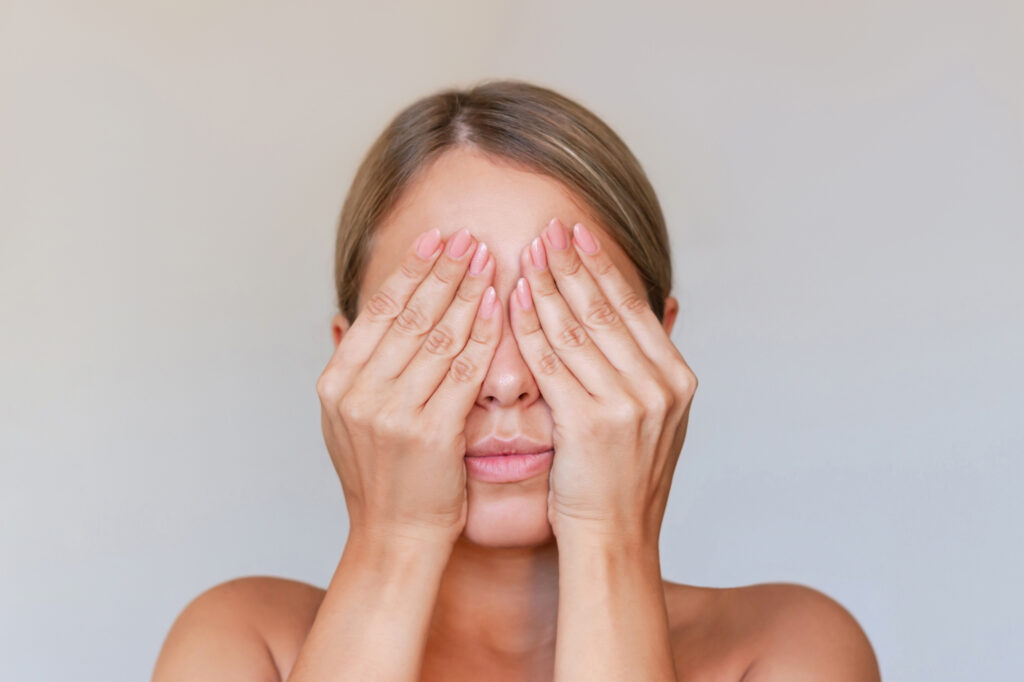
Conclusion: Will I Be Adding Beef Tallow To My Skincare Routine?
No I will not be adding beef tallow to my skincare routine. While I find beef tallow has many uses for cooking, applying it on my skin is not one of them.
What are your thoughts on beef tallow? Share below!
If you liked this post, checkout these past posts:
- Best Natural Face Moisturizers (For Your Skin Type)
- Petroleum Jelly Alternatives
- Best Natural Face Oils
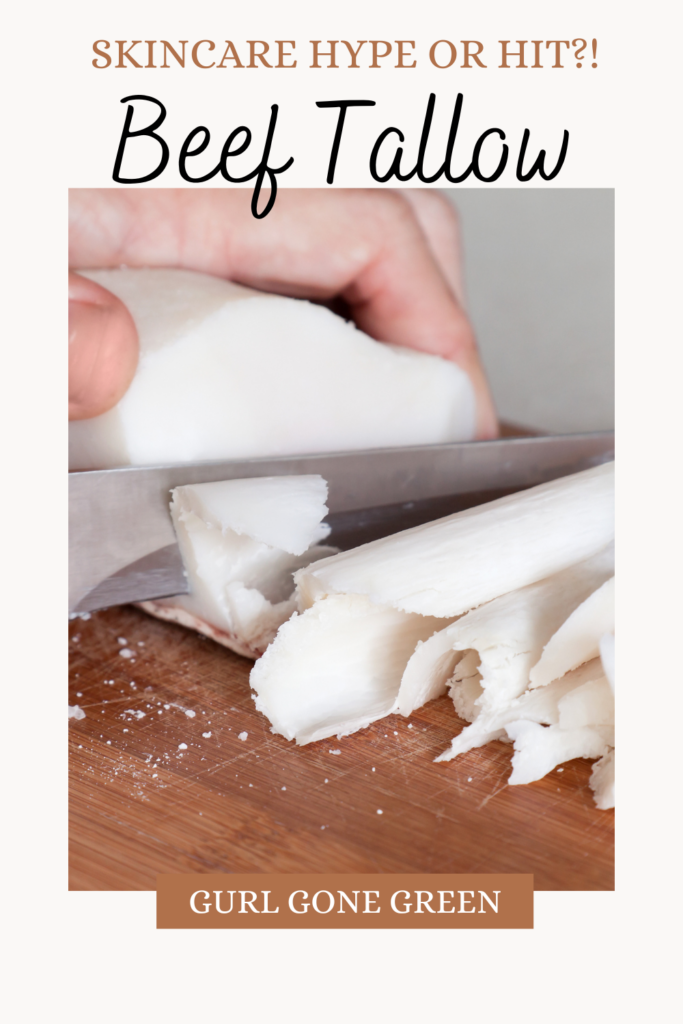



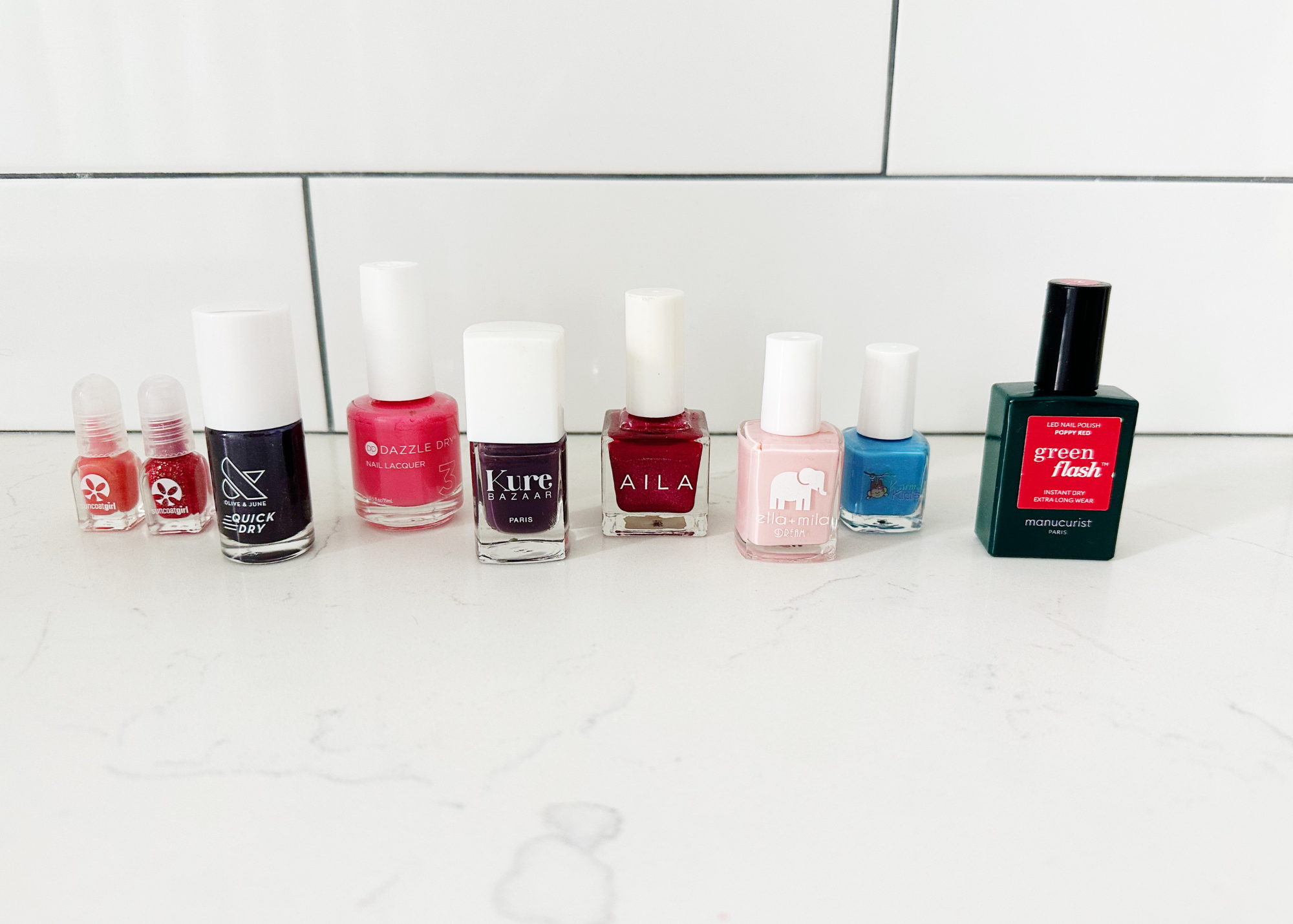
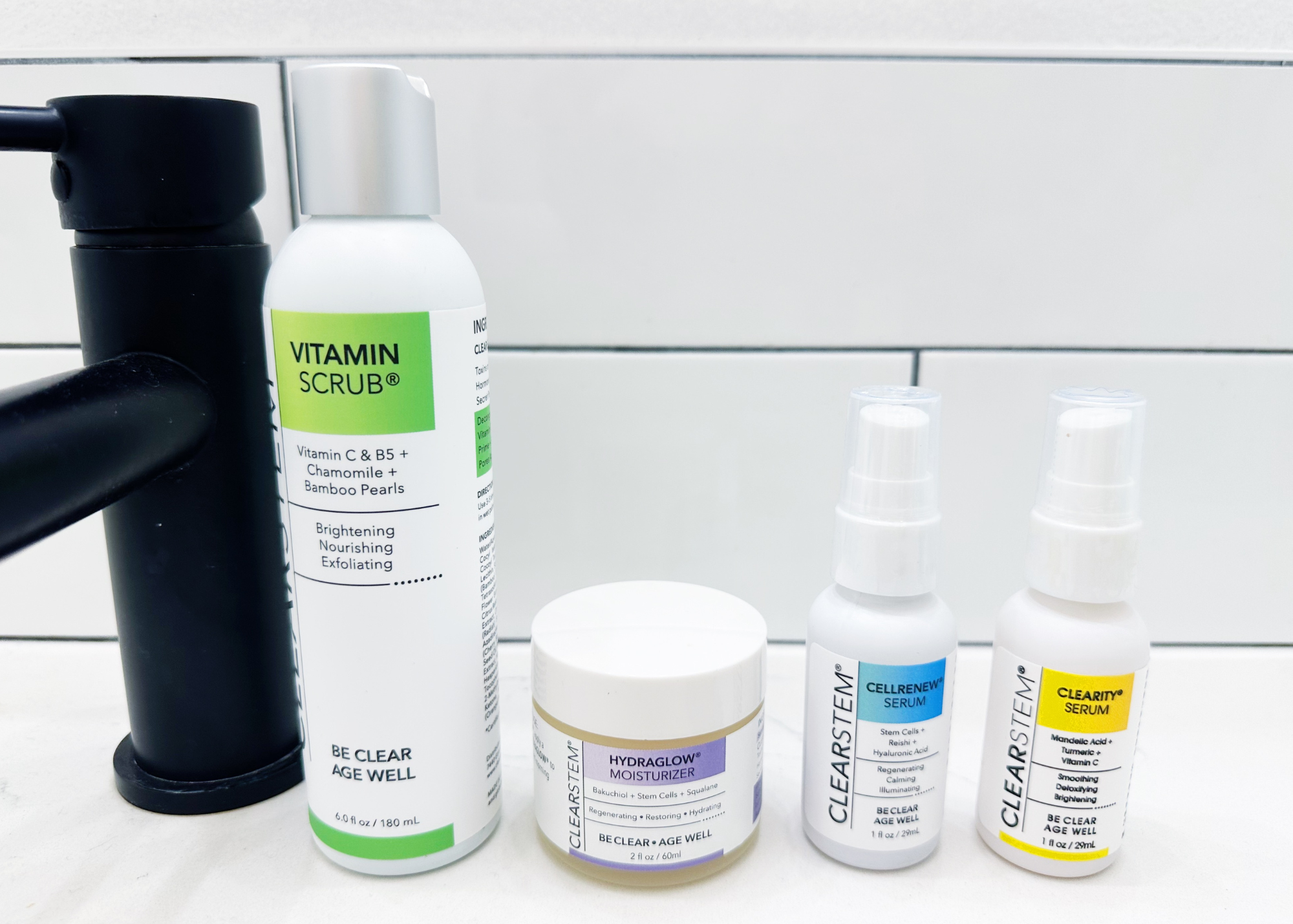
Thank you for your work.. it’s funny Primally Pure just came out with an antioxidant balm, and the first ingredient is beef tallow, with other ingredients, would you say it’s better since it’s not just beef tallow by itself? Thanks
Hi Terri,
No, I wouldn’t say it’s better. But it depends on your skin type.
Interesting article….I use Primally Pure skin care products, which have tallow in them and love them. Wouldn’t use anything else. I’ve had at least dozen stranger stop me on the street commenting on my skin. My dermatologist even commented on my complexion when I was in this summer. I have no intentions eliminating tallow from my skin care routine. My skin has never ever looked so good!
Hi Brooke,
I’m so glad you found something you really love and works for you! 🙂
Same. It has been a game changer for me. Never looked back.
I’ve been using tallow on my face for a couple of years and my skin has never looked better. I absolutely love it! People frequently ask me what I use on my skin, that never happened when I was younger. My skin is clear, moisturized, plump and the wrinkles are less apparent.
Hi Jenn,
Thats great! I’m glad you found something you love! 🙂